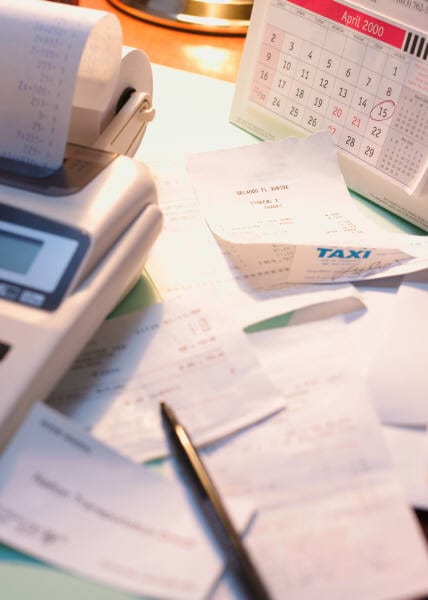As the old saying goes, “Nothing in life is certain except death and taxes.” As depressing as that sounds, you can certainly make tax prep “less taxing” by getting organized. (ba-dump-bump!)
Know Your Categories — Look at last year’s tax return and you’ll get a pretty good idea of what information you need to collect. It will tell you the types of income and expenses you reported last year so that you know what supporting documentation you need for the current year.
Use Folders — Create a folder system based on the categories of income and expenses you report. You can use individual file folders or I recommend using an accordion file folder with multiple pockets. Label your file folders or pocket tabs with the type of supporting tax documentation they contain; donation receipts, interest income, entertainment receipts, etc. In late January when you start receiving W-2s, 1099s and the like, you’ll know where to put them.
Computerize Bookkeeping — Software such as Quicken, web-based Mint.com, or QuickBooks (for business) make summarizing your income and expenses at year-end much simpler. With the click of a button you can print summary reports of all your taxable income and deductible expenses. The only caveat to using these powerful programs is that they require commitment. At a minimum, you need to enter transactions, download activity, and reconcile your accounts on a monthly basis. If you hated math in high school or are just not a numbers person, I don’t recommend this route.
Outsource Bookkeeping — Does keeping track of receipts and paying bills on a timely basis makes you want to pull your hair out? If so, then consider hiring a personal or business bookkeeper. A good bookkeeper will organize and manage your financial records more efficiently and effectively, keep you from paying late fees, and make preparing for taxes less burdensome. Besides, there are plenty of other things you can do that bring you joy and/or earn you money so, “do what you do best and outsource the rest.” (Author unknown)
Common Files —
- Income – Include pay stubs, W-2s, 1099s, interest and dividend statements.
- Donations – Include receipts for both cash and non-cash donations.
- Real Estate – File interest statements from mortgage and tax assessments.
- Child Care – Place your receipts for child care payments in this file.
- Tax Correspondence – Include any communication from the IRS or your state revenue service.
- Medical – File receipts for medical expenses and health insurance out-of-pocket expenses. Note: You can only deduct these if they are greater than 7.5% of your adjusted gross income.
- Business Files – Create a separate file for various types of receipts: meals and entertainment, mileage calculation, office expenses, etc.
- Scan What You Can — Rather than having to keep track of all those clutter creating paper receipts and supporting documents, convert them to electronic form. To make electronic conversion easier, invest in a reliable scanner such as NeatReceipts or the Fujitsu Scansnap.
Archive Old Returns — Don’t let years of tax returns take up prime real estate in your office file cabinets. File your old returns with their appropriate supporting documents in an out of the way place like your garage or attic (Store them in a Bankers Box or file box that is clearly labeled). The general rule of thumb is that you need to keep 7 years worth of returns. However, check with your accountant or tax professional to see what they recommend for your personal situation.
Reduce your tax time stress by implementing these tips today!


